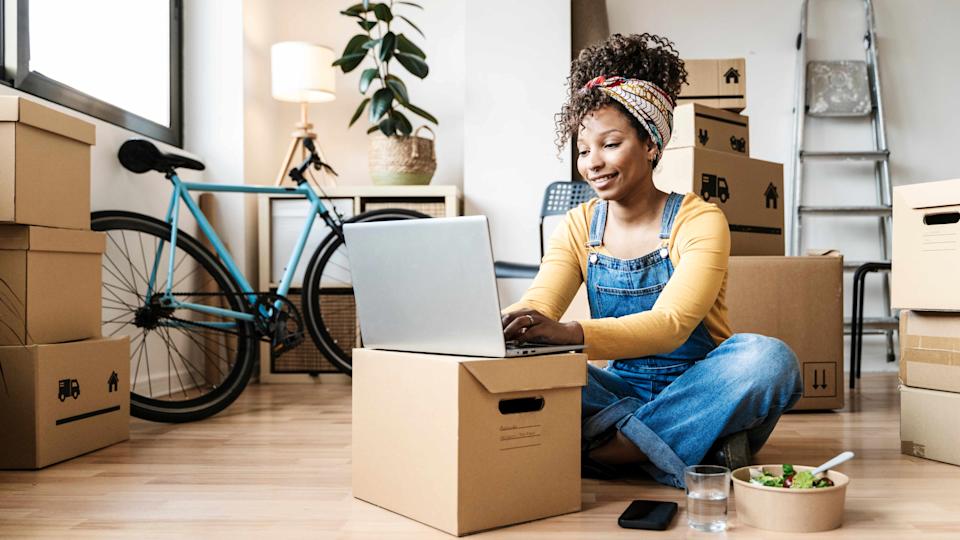Moving to a new home is an exciting new chapter. But the process itself can feel overwhelming. Packing up your entire life is a huge task, and it often highlights just how much stuff you’ve collected over the years. This is where downsizing comes in. By decluttering before you move, you can make the entire process smoother, faster, and surprisingly more affordable.
Taking the time to sort through your belongings isn’t just about cleaning up; it’s a strategic move. Fewer items mean less to pack, less to load onto a truck, and less to unpack in your new space. This directly translates to savings on moving supplies, transportation costs, and your own valuable time. We’ll walk you through practical decluttering tips for moving house and provide a simple downsizing home checklist to get you started.
The Real Cost of Moving Clutter
Why is it so important to declutter before the movers arrive? The answer is simple: every item you own has a cost attached to it during a move.
- Financial Costs:Removal companies often charge based on the weight or volume of your belongings. The more you move, the more you pay. This includes the cost of packing materials like boxes, tape, and bubble wrap. Selling unwanted items can also generate extra cash to offset moving expenses.
- Time Costs: Packing and unpacking are the most time-consuming parts of any move. A cluttered home takes significantly longer to sort through and organise. By decluttering in advance, you streamline the entire process, freeing up hours or even days.
- Energy and Stress Costs: The mental and physical toll of moving is significant. Deciding what to do with mountains of stuff you don’t need adds unnecessary stress. A streamlined move is a less stressful move, allowing you to focus on the excitement of your new home.
Your Ultimate Downsizing Home Checklist
Getting started is often the hardest part. Use this downsizing home checklist to guide you through the process, room by room.
1. Start Early and Create a Timeline
Procrastination is the enemy of a smooth move. Begin the decluttering process at least four to six weeks before your moving date. This gives you ample time to make thoughtful decisions without feeling rushed.
- Week 6: Start with storage areas like the attic, basement, or garage. These spaces often hold items you rarely use, making it easier to decide what to let go of.
- Week 5: Tackle closets and bedrooms. Go through clothes, shoes, and accessories.
- Week 4: Focus on the kitchen and pantry. Get rid of expired food, duplicate utensils, and small appliances you never use.
- Week 3: Work through living areas, offices, and bookshelves.
- Week 2: Address bathrooms and linen closets.
- Week 1: Handle final items, pack essentials, and clean.
2. The Four-Box Sorting Method
One of the most effective decluttering tips for moving house is the four-box method. As you go through each room, sort every single item into one of four categories:
- Keep: These are items you love, use regularly, and have a definite place for in your new home. Be realistic about your new space, if you’re downsizing, you can’t keep everything.
- Sell: Items in good condition that you no longer need can be sold. This includes furniture, electronics, designer clothing, and collectibles.
- Donate: Give items a second life by donating them. Clothes, books, kitchenware, and toys that are in usable condition are perfect for donation.
- Discard/Recycle: This category is for anything broken, expired, or unusable. Be sure to check local guidelines for recycling electronics, batteries, and other specific materials.
3. Be Ruthless and Ask the Right Questions
Letting go can be tough. To stay objective, ask yourself a few key questions for each item you’re unsure about:
- Have I used this in the last year?
- Do I have more than one of these?
- Will this fit in my new home and suit my new lifestyle?
Sentimental items are often the hardest to part with. You don’t have to throw everything away. Keep a small, designated box for irreplaceable treasures like photos and heirlooms. For bulky sentimental items, consider taking a photo as a memento before letting the physical object go.
Smart Ways to Handle Unwanted Items
Once you’ve sorted everything, you need a plan to get rid of the items you’re not keeping. Acting quickly prevents clutter from creeping back in.
Selling Your Items for Extra Cash
Selling your clutter can put a significant dent in your moving costs.
- Online Marketplaces: Platforms like Facebook Marketplace and Gumtree are excellent for selling furniture, appliances, and other large items locally.
- Consignment Shops: For high-end clothing, accessories, or furniture, a consignment shop can handle the selling process for you in exchange for a percentage of the profit.
- Garage Sale: A classic for a reason! A well-advertised garage sale is a great way to sell a large volume of miscellaneous items in a single weekend.
Donating and Recycling Responsibly
Donating is a fantastic way to support your community and keep items out of the landfill.
- Charities: Organizations like Lifeline, Vinnies, or The Salvation Army accept a wide range of goods, from clothing to furniture. Check their websites first, as some have restrictions on what they can take.
- Local Shelters: Animal shelters, women’s shelters, and homeless shelters often need specific items like towels, blankets, and toiletries.
- Recycling Centers: Your local council can provide information on how to properly dispose of electronics, old paint, and other household hazardous waste.
Conclusion
Downsizing before a move is about more than just saving time and money. It’s an opportunity to simplify your life and start fresh. By arriving at your new home with only the things you truly need and love, you create a space that is organised, functional, and peaceful from day one. You’ll spend less time unpacking and organising clutter and more time settling in and enjoying your new surroundings.

